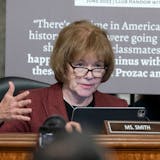Minnesota school districts are expanding their reach for summer school this year, hoping to provide more academic, mental health and social support to a larger-than-usual share of students who have faced setbacks and stress in the pandemic school year.
But with just two months until the school year wraps up, school leaders are sorting out whether they'll have the funding and the staff needed to launch the ambitious programs they say are needed. Districts were notified just last week on how much they'll receive from Minnesota's share of a second round of federal stimulus money — which includes $57.5 million for expanded summer programming — but don't know yet how much they will get from a later round of federal funding.
Further complicating the picture is the uncertain fate of a $104.5 million summer school package that was approved by the Minnesota House last month that failed to gain traction in the Senate before lawmakers' spring break.
While some school leaders are charging ahead with their summer plans, others are hedging their bets and contemplating whether they'll have to scale back their programs if the financial picture doesn't sharpen in the very near future. Jennifer Walsh, finance director for Albert Lea schools in southeast Minnesota, said that without more certainty, it's hard to make plans and start signing up students.
"We just can't afford to put ourselves into a position of spending funds that we're not 100% sure are going to be available to us," she said.
Educators have for months been looking toward summer as an opportunity to make up for time and learning lost this year. Schools across the state have reported higher numbers of students with failing grades, have struggled with absenteeism and dealt with concerns about students' mental health and well-being.
The hope has been that summer would come with more vaccinated teachers, lower COVID-19 activity and more possibilities for in-person instruction. And instead of following the traditional model, where summer school programs are limited to a relatively small number of students who qualify because they're struggling in a particular subject, missing credits for graduation or have other specific challenges, school leaders want to cast a wide net.
Many districts are aiming to expand their summer offerings and the number of students enrolled. For example, in pre-pandemic summers, the North St. Paul-Maplewood-Oakdale district typically offered five different summer programs that ran for a week or two and were limited to a small number of students, many of whom qualified for special education services. This year, the district's plans call for nearly a dozen programs, open to a wider range of students, and stretching across the summer.


